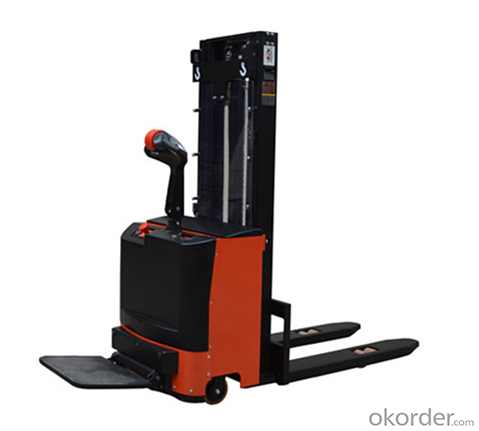Loading Port:Shanghai
Payment Terms:TT or LC
Min Order Qty:1 unit
Supply Capability:1 unit/month
| MODEL | EFS0516G | |
| Capacity Q | Kg | 500 |
| Load center c | mm | 550 |
| Max.Fork Height | mm | 1600 |
| Lowered Fork Height | mm | 85 |
| Fork Adjust Width | mm | 550 |
| Fork Width | mm | 150 |
| Fork Length | mm | 1050 |
| Overall length | mm | 1520 |
| Overall height | mm | 2010 |
| Overall width | mm | 820 |
| Ground Clearance | mm | 28 |
| Front Wheel | mm | Φ74x55 |
| Rear Wheel | mm | Φ150x42 |
| Net Weight | Kg | 156 |
Conforms to EN1757-1
A stacker is a large machine used in bulk material handling. Its function is to pile bulk material such as limestone, ores and cereals on to a stockpile. A reclaimer can be used to recover the material.
Gold dredges in Alaska had a stacker that was a fixed part of the dredge. It carried over-size material to thetailings pile.
Stackers are nominally rated for capacity in tonnes per hour (tph). They normally travel on a rail between stockpiles in the stockyard. A stacker can usually move in at least two directions: horizontally along the rail and vertically by luffing (raising and lowering) its boom. Luffing of the boom minimises dust by reducing the distance that material such as coal needs to fall to the top of the stockpile. The boom is luffed upwards as the height of the stockpile increases. Some stackers can rotate the boom. This allows a single stacker to form two stockpiles, one on either side of the conveyor.
Stackers are used to stack in different patterns, such as cone stacking and chevron stacking. Stacking in a single cone tends to cause size segregation, with coarser material moving out towards the base. In raw cone ply stacking, additional cones are added next to the first cone. In chevron stacking, the stacker travels along the length of the stockpile adding layer upon layer of material.


